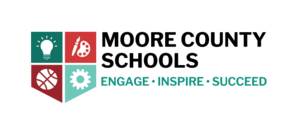Learning Domain: 1. Computing Systems
Standard: Evaluate the features available on digital devices to perform a variety of classroom tasks.
Degree of Alignment:
Not Rated
(0 users)
Learning Domain: 1. Computing Systems
Standard: Model how computer hardware and software work together as a system to accomplish tasks.
Degree of Alignment:
Not Rated
(0 users)
Learning Domain: 1. Computing Systems
Standard: Choose appropriate devices to perform a variety of classroom tasks.
Degree of Alignment:
Not Rated
(0 users)
Learning Domain: 1. Computing Systems
Standard: Describe the function of common physical components of computing systems (hardware) with appropriate terminology.
Degree of Alignment:
Not Rated
(0 users)
Learning Domain: 1. Computing Systems
Standard: Operate appropriate software to perform a variety of tasks.
Degree of Alignment:
Not Rated
(0 users)
NC.DLS.CT.5
North Carolina Digital Learning Standards
Grades K-12
Learning Domain: Computational Thinker
Standard: Students develop and employ strategies for understanding and solving problems in ways that leverage the power of technological methods to develop and test solutions.
Degree of Alignment:
Not Rated
(0 users)
NC.DLS.CT.5.a
North Carolina Digital Learning Standards
Grades K-12
Learning Domain: Computational Thinker
Standard: Students formulate problem definitions suited for technology-assisted methods such as data analysis, abstract models and algorithmic thinking in exploring and finding solutions.
Degree of Alignment:
Not Rated
(0 users)
NC.DLS.CT.5.b
North Carolina Digital Learning Standards
Grades K-12
Learning Domain: Computational Thinker
Standard: Students collect data or identify relevant data sets, use digital tools to analyze them, and represent data in various ways to facilitate problem-solving and decision-making.
Degree of Alignment:
Not Rated
(0 users)
NC.DLS.CT.5.c
North Carolina Digital Learning Standards
Grades K-12
Learning Domain: Computational Thinker
Standard: Students break problems into component parts, extract key information, and develop descriptive models to understand complex systems or facilitate problem-solving.
Degree of Alignment:
Not Rated
(0 users)
NC.DLS.CT.5.d
North Carolina Digital Learning Standards
Grades K-12
Learning Domain: Computational Thinker
Standard: Students understand how automation works and use algorithmic thinking to develop a sequence of steps to create and test automated solutions.
Degree of Alignment:
Not Rated
(0 users)
Learning Domain: Operations and Algebraic Thinking
Standard: Determine whether a group of objects, within 20, has an odd or even number of members by: Pairing objects, then counting them by 2s; Determining whether objects can be placed into two equal groups; Writing an equation to express an even number as a sum of two equal addends.
Degree of Alignment:
Not Rated
(0 users)
Learning Domain: 1.5. Computational Thinker
Standard: Students develop and employ strategies for understanding and solving problems in ways that leverage the power of technological methods to develop and test solutions.
Degree of Alignment:
Not Rated
(0 users)
Learning Domain: 1.5. Computational Thinker
Standard: Students formulate problem definitions suited for technologyassisted methods such as data analysis, abstract models and algorithmic thinking in exploring and finding solutions.
Degree of Alignment:
Not Rated
(0 users)
Learning Domain: 1.5. Computational Thinker
Standard: Students collect data or identify relevant data sets, use digital tools to analyze them, and represent data in various ways to facilitate problem-solving and decision-making.
Degree of Alignment:
Not Rated
(0 users)
Learning Domain: 1.5. Computational Thinker
Standard: Students break problems into component parts, extract key information, and develop descriptive models to understand complex systems or facilitate problem-solving.
Degree of Alignment:
Not Rated
(0 users)
Learning Domain: 1.5. Computational Thinker
Standard: Students understand how automation works and use algorithmic thinking to develop a sequence of steps to create and test automated solutions.
Degree of Alignment:
Not Rated
(0 users)



If students were given a choice for the devices, hardware & software being used, this lesson would align with K2.CS.01, K2.CS.02, K2.CS.03, 35.CS.01 & 35.CS.02.